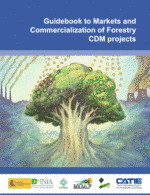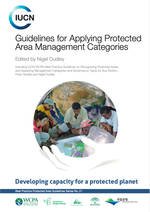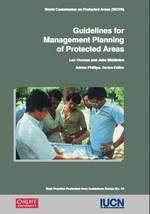Tools
A tool is a resource that supports and guides the implementation of SFM. This section includes all the tools available in the SFM Toolbox, which can be in form of publications, e-learning videos, software etc.
You can browse the Tools through keywords in the free search box or you can narrow the search using the filters on the right side of the page.
Insect pests damage millions of hectares of forest worldwide each year. Moreover, the extent of such damage is increasing as international trade grows, facilitating the spread of insect pests, and as the impacts of climate change become more evident. Classical biological control is a well-tried, cost-effective approach to the management...
The animation illustrates the identity and remit of the CPW, and conveys this constructive message: “We can confront existing challenges affecting wildlife. This is particularly true if we bring together complementary competences and align our efforts globally, whenever possible or necessary”. This animation emphasizes the fact that appropriate and...
This guide provides project developers with information on markets and the commercialization of certified emissions reductions (CERs) obtained by forestry projects. It takes readers through the development stages of a Clean Development Mechanism forestry project; the specific characteristics of forestry CERs; and the demand for this type of credit.
The IUCN Guideline provides clarity regarding the meaning and application of the IUCN protected area management categories. The guideline describe the definition and the categories; discuss application in particular biomes and management approaches and aims to complement the 1994 IUCN Guidelines.
This manual provides methods for the development and evaluation of criteria and indicators (C&I) which can then be used to assess the sustainability of forest management. The manual is written primarily for researchers, people or groups interested in evaluating C&I for assessments of forests in new areas, or as a...
Integrating gender and social equity into conservation programming can help practitioners and policy makers to be systematic, effective and successful to advance gender-inclusive conservation. These set of institutional priorities, policies and examples are a living resource, shaped by evolving best practice and informed by Conservation International (CI)’s growing knowledge and...
These Guidelines represent a working framework for protected area planners to consider and adapt to their needs and circumstances. Although it have generally been written in the context of management being exercised by a central, provincial or local government body, as it is recognized that the management responsibility for an...
Connectivity conservation is essential for managing healthy ecosystems, conserving biodiversity and adapting to climate change across all biomes and spatial scales. Well-connected ecosystems support a diversity of ecological functions such as migration, hydrology, nutrient cycling, pollination, seed dispersal, food security, climate resilience and disease resistance. These Guidelines are based on...
More and more communities are beginning to recognize the very tangible benefits that trees provide in the urban environment. Healthy trees reduce air and noise pollution, provide energy-saving shade and cooling, furnish habitat for wildlife, enhance aesthetics and property values, and are an important contributor to
community image, pride, and quality...
This document describes the procedures for conducting ecological restoration in accord with the norms of the discipline that were established in the SER International Primer (SER 2002 and 2004, www.ser.org). Each procedure is stated in terms of a guideline that leads restoration practitioners and project managers stepwise through the process...










